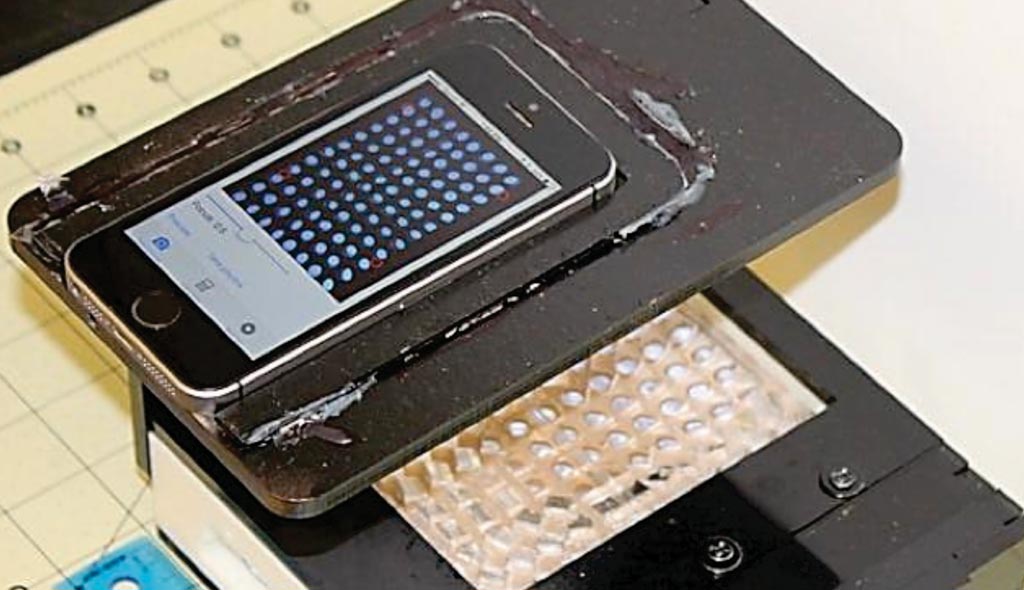Smart Phone Reader Detects Common Pathogens
By LabMedica International staff writers
Posted on 10 May 2018
In rural or low resource areas, doctors sometimes must rely on a patient's symptoms or use their own judgement in looking at test sample color results to determine whether a patient has an infection.Posted on 10 May 2018
A low-cost, portable laboratory on a phone has been developed that works nearly as well as clinical laboratories to detect common viral and bacterial infections. The work could lead to faster and lower-cost laboratory results for fast-moving viral and bacterial epidemics.

Image: The low-cost, portable laboratory on a phone that can interpret results from a microplate assay (Photo courtesy of Washington State University).
Bioengineers at Washington State University (Pullman, WA, USA) and their colleagues developed an ultra-low-cost clinically accurate mobile phone microplate reader (mReader), and clinically validated this optical device for 12 infectious disease tests. The mReader optically reads 96 samples on a microplate at one time. The team tested 771 de-identified patient samples for 12 serology assays for bacterial/viral infections. The mReader and the clinical instrument blindly read and analyzed all tests in parallel.
The scientists evaluated the analytical accuracy and the diagnostic performance of the mReader across the clinical reportable categories by comparison with clinical laboratorial testing results. The mReader exhibited 97.6% to 99.9% analytical accuracy and <5% coefficient of variation (CV). The positive percent agreement (PPA) in all 12 tests achieved 100%, negative percent agreement (NPA) was higher than 83% except for one test (42.9%), and overall percent agreement (OPA) ranged 89.3% to100%. The team was able to build the device for about USD 50, but the manufacturing cost would probably be lower than that.
The authors envision the mReader can benefit underserved areas/populations and low-resource settings in rural clinics/hospitals at a low cost with clinical-level analytical quality. It has the potential to improve health access, speed up healthcare delivery, and reduce health disparities and education disparities by providing access to a low-cost spectrophotometer. The study was published on March 23, 2018, in the journal Clinica Chimica Acta.
Related Links:
Washington State University







 Analyzer.jpg)






